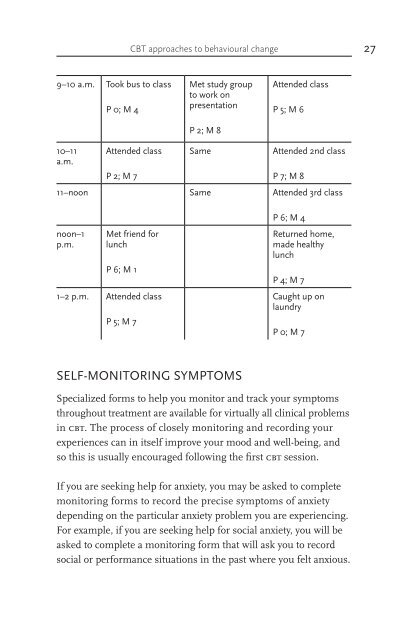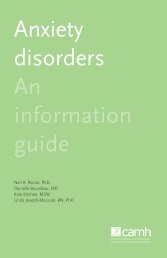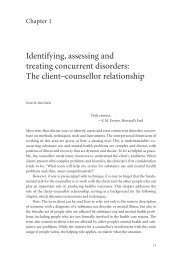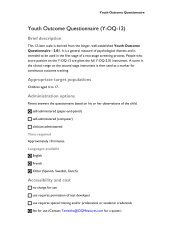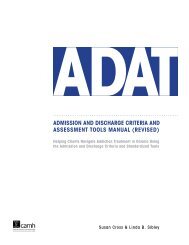Cognitive-behavioural therapy: An information guide - CAMH ...
Cognitive-behavioural therapy: An information guide - CAMH ...
Cognitive-behavioural therapy: An information guide - CAMH ...
Create successful ePaper yourself
Turn your PDF publications into a flip-book with our unique Google optimized e-Paper software.
CBT approaches to <strong>behavioural</strong> change<br />
27<br />
9–10 a.m. Took bus to class<br />
P 0; M 4<br />
Met study group<br />
to work on<br />
presentation<br />
P 2; M 8<br />
Attended class<br />
P 5; M 6<br />
10–11<br />
a.m.<br />
Attended class Same<br />
Attended 2nd class<br />
P 2; M 7<br />
P 7; M 8<br />
11–noon Same Attended 3rd class<br />
noon–1<br />
p.m.<br />
Met friend for<br />
lunch<br />
P 6; M 1<br />
1–2 p.m. Attended class<br />
P 5; M 7<br />
P 6; M 4<br />
Returned home,<br />
made healthy<br />
lunch<br />
P 4; M 7<br />
Caught up on<br />
laundry<br />
P 0; M 7<br />
self-monitoring symptoms<br />
Specialized forms to help you monitor and track your symptoms<br />
throughout treatment are available for virtually all clinical problems<br />
in cbt. The process of closely monitoring and recording your<br />
experiences can in itself improve your mood and well-being, and<br />
so this is usually encouraged following the first cbt session.<br />
If you are seeking help for anxiety, you may be asked to complete<br />
monitoring forms to record the precise symptoms of anxiety<br />
depending on the particular anxiety problem you are experiencing.<br />
For example, if you are seeking help for social anxiety, you will be<br />
asked to complete a monitoring form that will ask you to record<br />
social or performance situations in the past where you felt anxious.


